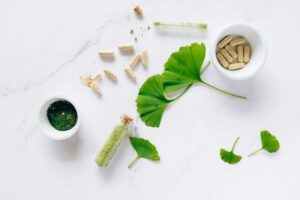[ad_1]
The sweet scent of vanilla has an unusual origin. The aromatic seed pod is the product of a pale yellow orchid that blooms from tree-climbing vines. Native to the tropical Americas, it is now grown around the world, particularly in Madagascar, off the eastern coast of Africa.
That connection between vanilla plants and trees, combined with rich countries’ demand for the crop, could be harnessed to help both poor farmers and endangered species in this island nation, scientists say. That’s because vanilla farms operating in land previously cleared for crops such as rice turn out to be a haven for species, including ones found only in Madagascar, according to new research.
“The good news is that farmers do not have to clear land to achieve high yields. In fact, they can add value for biodiversity to fallow land by cultivating vanilla there,” said Annemarie Wurz, who led the research as a PhD student at Göttingen University in Germany.
Like many large tropical islands, Madagascar is a biodiversity hotspot. The combination of lush forests and geographic isolation is a recipe for the evolution of species found nowhere else, including a variety of adorable lemurs, ornate orchids and tiny chameleons less than an inch long. But many of these creatures are imperiled as logging and slash-and-burn agriculture eats away at old-growth forests.
That prompted Wurz and colleagues in Germany and Madagascar to examine whether tree-dependent vanilla farming might offer a way for people there to earn a living while also providing habitat for some of the island’s non-human inhabitants.
To figure this out, in 2017 they selected 10 villages in northeast Madagascar with active vanilla farming. In each village, they marked plots of land in fragments of forest; land left fallow after being cleared for growing crops such as rice; and three vanilla farms that differed by the thickness of the tree canopy. In some cases, the vanilla was grown in land previously cleared for farming and later filled with trees either planted by farmers or regrowing on their own. In other cases, the farmers had cleared underbrush from existing forests to plant their crop.
All told, the researchers studied 70 locations: 20 vanilla farms growing on land cleared in the past, 10 in existing forests, 10 forest fragments, 20 plots of fallow farmland, and 10 sections of old-growth forest protected inside nearby Marojejy National Park.
At each site, the scientists counted how many species of birds, reptiles, ants, butterflies, amphibians, trees and other plants found within a circle covering two square kilometers. At the vanilla farms, they also tracked key indicators of vanilla production, including how densely the land was planted with vanilla vines, the total weight of vanilla pods harvested, and how much time farmers spent on the vanilla operation.
The data revealed a promising insight that surprised the researchers: The overall biodiversity—i.e. the number of species—found at a vanilla operation didn’t decline in places that were farmed more intensely. Farmers could plant more vines harvest more vanilla pods without harming the number of species found there.
This differs from other key tropical forest crops, such as coffee. The reason comes down to shade. The vanilla crop was just as large in farms with relatively dark, closed forest canopies, the researchers found.
For some of the species living there, that additional forest canopy was a haven. Even vanilla farms on land previously cleared to raise other crops offered enough tree coverage to attract more species than land simply left fallow. Compared to fallow land, these farms were home to 12% more species overall and 38% more species found only on the island, the scientists reported Tuesday in Nature Communications.
“Promoting vanilla cultivation on fallow land is ecologically and economically significant,” said Ingo Grass, an ecologist at the University of Hohenheim who took part in the research. “This study illustrates possibilities for promoting and conserving biodiversity outside protected areas.”
These biodiversity benefits were, however, confined to vanilla grown on former cropland. Vanilla operations inside existing forests were associated with fewer species than untouched forest—a drop of 23% in the overall number of species, and 47% fewer endemic species.
The scientists called for efforts to steer more vanilla cultivation to land already cleared for agriculture as a way to boost species numbers on that land and relieve pressure on surrounding forests, while at the same time enabling farmers to make a living.
Doing that won’t be simple. While 70% of vanilla farming in the area is already done on fallow land, there are big barriers to farmers expanding that crop. Some of the land is used to grow rice and medicinal plants. Growing vanilla is also labor intensive and fraught with financial peril. Farmers must hand-pollinate the flowers and guard the plants from thieves targeting the valuable vanilla pods. It can also take three years for vanilla vines to produce their first crop and vanilla prices can fluctuate dramatically, creating risks for poor farmers, noted Wurz.
To help address those barriers, Wurz said, contracts with farmers that offer food aid, income stability and premium prices can “help to promote fallow-derived vanilla agroforestry.”
Wurz, et. al. “Win-win opportunities combining high yields with high multi-taxa biodiversity in tropical agro-forestry.” Nature Communications. July 26, 2022
Image: ©Anthropocene Magazine
[ad_2]
Source link







